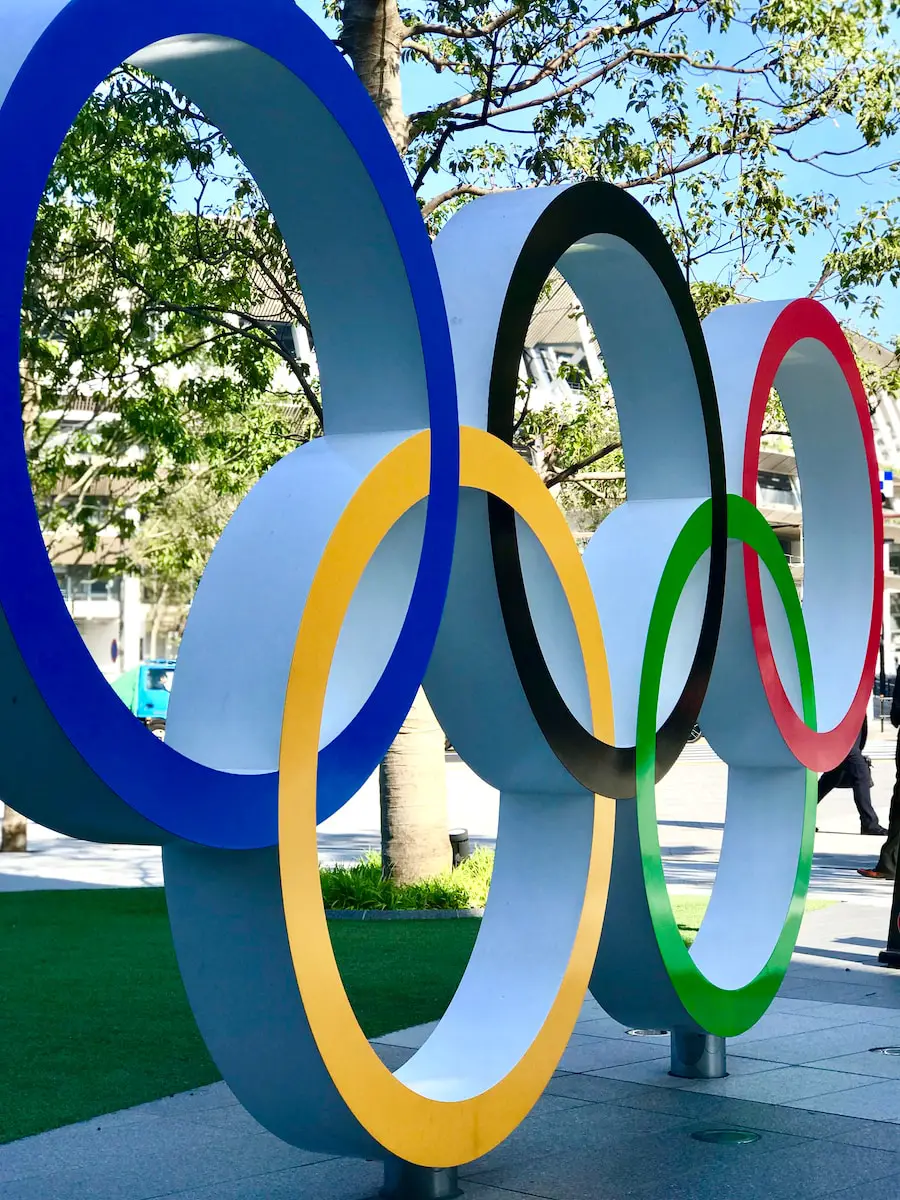If you’re like me, you’ve probably caught wind of the growing buzz around Pickleball. It’s a sport that’s been sweeping the nation, combining elements of tennis, badminton, and ping-pong into a fun, fast-paced game. But there’s one frontier it hasn’t conquered yet: the Olympics.
The idea of Pickleball in the Olympics isn’t as far-fetched as it might sound. The sport’s popularity is skyrocketing, and it’s starting to gain international recognition. It’s a question that’s been on my mind, and I’m sure many of yours too: could we see Pickleball in the Olympics anytime soon?
Well, I’ve done some digging, and I’m here to share what I’ve found. Let’s explore the potential of Pickleball gracing the grandest stage in sports.
The Rise of Pickleball
In recent years, there has been a surge in the popularity of Pickleball. It’s fast, it’s fun, and it’s gaining traction worldwide. The question on many people’s minds is: “Could this sport make its way into the Olympics?”
Pickleball’s increase in popularity isn’t happening by chance. It’s a result of the sport’s unique appeal. Pickleball is an intriguing blend of tennis, badminton, and ping-pong that’s easy to learn and requires minimal equipment. This makes it an attractive option for people of all ages and levels of athletic ability.
Pickleball’s charm doesn’t end with accessibility, either. It’s a sport that fosters community and builds strong interpersonal connections. This emphasis on camaraderie and friendly competition is a big part of why Pickleball has been resonating with people across the globe.
To illustrate the growth of Pickleball, let’s delve into some data:
| Year | Estimated Players in the U.S. |
|---|---|
| 2013 | 106,000 |
| 2016 | 209,000 |
| 2019 | 3.3 million |
As shown in the table, the estimated number of players in the U.S. more than doubled from 2013 to 2016. The growth exploded further between 2016 and 2019, the number of players reaching an astounding 3.3 million.
As we can see, Pickleball is not just a fleeting trend. Its appeal has broadened considerably in recent years. It caters to a diverse range of players, from those looking for a slower-paced game they can enjoy with friends, to serious athletes seeking a new challenge.
This surge of interest and participation in Pickleball is what’s fueling the conversation around its potential inclusion in the Olympic roster. In the next section, we’ll explore where that conversation is currently at and what it would take for Pickleball to become an Olympic sport.
The Possibility of Olympic Inclusion
As the surge for Pickleball rises, there’s a persistent buzz about its possible inclusion in the Olympics. I’ve been excited to hear all the chatter around this topic and decided to dig a bit into the feasibility.
According to the International Olympic Committee (IOC), a sport has to be internationally recognized, widely played in at least 75 countries, and established in a minimum of four continents to be considered for inclusion. With my research, I found that Pickleball falls short of these markers, but the gap diminishes as the sport grows in popularity each passing day.
Here’s a breakdown showing the current international state of Pickleball:
| Continents | No. of Countries |
|---|---|
| Americas | 5 |
| Asia | 2 |
| Europe | 4 |
| Oceania | 1 |
| Africa | 1 |
The sport’s community spirit is lucrative; it even brought the Tennis industry giants like Wilson and Franklin into the Pickleball market. To further elevate Pickleball’s international recognition, Pickleball-themed events have been organized around the globe.
Pickleball’s growth on media channels is crucial for its possible Olympic inclusion. The more the sport is covered by media, both traditional and digital, the more people know about it. A positive correlation can be noticed between the popularity of a sport and its media coverage which eventually concludes in its Olympic inclusion.
Picklball’s growing popularity is attracting a more diverse set of players. These include young athletes with a competitive mindset who could represent their countries if Pickleball were to become an Olympic Sport.
Will we see Pickleball in the Olympics? It’s a question we can’t answer definitively yet. But the excitement and anticipation around the possibility continue to fuel the Pickleball wave. We’ll see where it takes us.
The International Recognition
Setting foot on the global stage is the first big step for any sport. And Pickleball is no exception. It’s inching towards mass acceptance worldwide. Increasing international recognition is an essential criterion for Olympic consideration. And in terms of Pickleball, it’s moving positively in this direction.
To give you an idea, let’s look at the increase in the number of Pickleball associations worldwide over the years:
| Year | Number of Associations |
|---|---|
| 2010 | 100 |
| 2015 | 900 |
| 2020 | 2400 |
The growth exemplifies its popularity as a sport on the rise.
Countries like Spain, India, and Japan are also catching the Pickleball wave. This diverse reach hints at its potential to become a globally recognized game. The shift in the sport’s demographics is encouraging too. Once tagged as a hobby for the retired, it’s now appealing to a younger audience. Athletes across all age brackets and from various backgrounds are passionately involved in it.
It’s true that more discussions about Pickleball are happening on international forums now than ever before. But recognition is one thing. Meeting the criteria set by the International Olympic Committee (IOC) is another. The Pickleball community needs to focus on developing the game in countries where it’s relatively low in popularity. Simultaneously, efforts should be made to hike its prestige value.
And, media plays a significant role in this scenario. It’s a powerful tool that can help Pickleball reach untapped markets. Major tennis industry players have already turned the spotlight towards Pickleball. The more media coverage it gets, the closer it nudges towards the chance of appearing in the Olympics.
No denial, there’s still a long way to go before we see Pickleball making its Olympic debut. This progress gives Pickleball enthusiasts hope. As the anticipation builds, the sport is gathering more passionate supporters each day.
It’s a thrilling journey, and I am as excited as you are to witness it unfold. Let’s wait and see where it takes us.
The Pros and Cons
In looking at Pickleball’s potential place in the Olympics, it’s important to consider the pros and cons. The debates around this subject have brought me to put together a balanced perspective on this matter.
The Pros
Pickleball’s inclusion in the Olympics could propel this sport to a whole new level. The prominent exposure would not only elevate the status of Pickleball internationally but also broaden its player base. Athletes of different ages, backgrounds, and skill levels find Pickleball engaging. It is a less physically demanding game than sports like tennis or basketball, which makes it a universal choice.
Also worth considering, it has a simpler set of rules when compared to some other Olympic sports. This allows for easy understanding and wider participation from athletes worldwide.
The Pros Table
| Pros | Description |
|---|---|
| Exposure | Raises international awareness |
| Player Base | Appeals to diverse age and skill |
| Participation | Easy-to-learn rules boost global participation |
The Cons
Its relatively recent emergence as a sport might put it at a disadvantage. The Olympic Committee keeps strict guidelines for inclusion. A sport must be widely played internationally, with men’s competitions held in at least 75 countries and women’s in a minimum of 40. Currently, the reach of Pickleball is growing but when it fulfills these criteria remains to be seen.
Additionally, despite its growing popularity, Pickleball doesn’t have a long-standing history like many Olympic sports. For events that celebrate historical and cultural significance, this could play against its favor.
The Cons Table
| Cons | Description |
|---|---|
| International Requirements | Might not meet Olympic Committee standards |
| Historical Significance | Lacks the long-standing prominence of other sports |
As this journey unfolds, the international Pickleball community’s enthusiasm echoes the potential and optimism for this sport’s future. Despite hurdles, the ongoing efforts and growth speak volumes about the sport’s Olympic potential. Hence, the popular adage remains fitting – “it’s not the destination, it’s the journey”.
The next section will explore the present initiatives and prospects of Pickleball associations around the globe. Let’s dive in, shall we?
The Road to Olympic Acceptance
From its humble beginnings, Pickleball has sparked global interest. It’s a true testament to the charisma of the sport and the dedication of its players. However, the journey of Pickleball to Olympic acceptance isn’t straightforward.
The first crucial step in achieving this aim is securing recognition from the International Olympic Committee (IOC). Once a sport is recognized, it’s then up to the respective International Federation, in this case, the International Federation of Pickleball (IFP), to file an application.
With the IFP’s latest initiatives and worldwide membership growth, the pace is set. IFP is launching programs to increase familiarity with the sport and foster talent. They’ve also harmonized rules and regulations across member nations to ensure consistency and fairness in competitions.
Strategically, efforts are amplified in countries where Pickleball is least known. This global expansion strategy aims to foster the all-inclusive nature of the sport. Promoting Pickleball in these untapped regions opens new opportunities.
At a glance, the progress may not seem significant but it’s a thorough process. Olympic inclusion requires an extensive list of prerequisites like global participation, audience appeal, and operational practicalities. Every sport aspiring to join the Olympic family must pass through this rigorous process.
In the context of Pickleball’s Olympic acceptance, patience is key. It’s a process that takes years, even decades to come into fruition. In the meantime, what matters most is the distance covered rather than the distance left.
As the sport progresses on the Road to Olympic Acceptance, I’ll continue to monitor and share updates. This is an exciting journey and there’s still much to look forward to.
Here’s a brief recap of the critical steps on the road to Olympic acceptance:
- Recognition from the IOC
- Application filed by the IFP
- Boosting global familiarity and talent
- Harmonizing rules across member nations
These steps will lead to the broader appeal of Pickleball across the globe and move it closer to the goal of Olympic inclusion. With all eyes set on this goal, it’s an exciting time to be part of the international Pickleball community. It’ll be intriguing to see how the story of Pickleball unfolds on the Olympic stage.
Conclusion
So, we’ve navigated the path Pickleball is taking towards its Olympic debut. It’s clear that it’s a journey filled with steps and processes, both big and small. From gaining IOC recognition to aligning with the IFP, every move counts. The IFP’s efforts to boost the sport’s profile and establish unified rules are commendable. While achieving Olympic status isn’t an overnight feat, the progress made so far is promising. It’s thrilling to envision Pickleball gracing the Olympic stage, and I’m eager to see how this journey unfolds. The future of Pickleball in the Olympics looks bright, and I can’t wait to cheer on our athletes when that day comes.














0 Comments